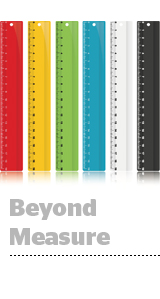 The industry appears to be inching slowly but surely toward advertising metrics and pricing models that better reflect reality.
The industry appears to be inching slowly but surely toward advertising metrics and pricing models that better reflect reality.
Twitter, for example, recently nixed timeline views – the number of times users refresh their feed – as a measure of engagement on its platform. Peter Stabler, senior analyst at Wells Fargo Securities, commended the decision during Twitter’s Q1 earnings call on Tuesday, remarking that “the timeline view had fully outlived its usefulness.”
Cost per engagement also appears to have outlived its usefulness on Twitter’s platform in favor of CPX, or cost per action, tied to specific campaign goals. Twitter transitioned to CPX for its direct-response products, like website cards, in an effort to deliver advertisers with lower-funnel leads – a move that’s had a dampening effect on click-through rate.
But that’s a necessary trade-off in the longer-term journey toward setting “a much higher bar to drive an engagement,” Twitter CEO Dick Costolo told investors. It’s just not having a material impact on Twitter’s bottom line yet, though CFO Anthony Noto remains confident.
“We will continue to drive toward quality, event if it comes at the expense of some revenue in the near term, like it did this quarter,” Noto said. (Twitter missed its revenue guidance by roughly 2% in Q1 2015. Following a leak of its earnings numbers before the market closed on Tuesday, Wall Street reacted accordingly, causing a dramatic dip in Twitter’s stock price.)
This intensified focus on more representative engagement metrics – beyond Twitter’s attempt to direct attention away from monthly active users (MAUs), the size of which Costolo has been vocally insistent doesn’t represent the sum total of Twitter’s value – dovetails with an overall industry trend.
Companies like Chartbeart, Grapeshot, WebSpectator and others are pushing for attention metrics over clicks and large publishers like the Financial Times, the Economist Group, Upworthy, Time.com and The Wall Street Journal are now selling ads based on time spent.
And on Monday, BuzzFeed announced a new metric for online content dubbed “Pound,” short for Process for Optimizing and Understanding Network Diffusion, which aims to show the exact paths its content takes as it goes viral on the social web beyond the “limited insight” available through traditional web analytics, wrote BuzzFeed publisher Dao Nguyen in a blog post.
Nguyen took the stage at BuzzFeed’s NewFront event on Tuesday to say that the publisher is actively looking to sign up beta test partners to develop Pound into a product that advertisers could use to track the actual impact of content beyond clicks and shares.
“We are in a ‘show me’ industry and advertisers aren’t looking for clicks anymore,” said Tim Jenkins, CEO of 4INFO, which released a mobile advertising benchmark study on in-store sales lift on Friday in collaboration with shopper marketing juggernaut Catalina. 4INFO provides its advertiser clients – Gerber, Tide, Ben & Jerry’s, Olay, Kraft, Pampers and Dole among them – with campaign metrics around ROAS, UPC- and SKU-level sales lift and product lift vs. brand lift.
“Marketers want to be able to justify spend in mobile and cross-screen, but what they get back from agencies are traditional web metrics,” Jenkins said. “But that’s because agencies are compensated to generate digital KPIs.”
Which leads to the question of pricing. Digital-specific metrics require digital-specific pricing mechanisms, but CPE and CPM, still the most widely adopted cost metrics, don’t always serve an advertiser’s needs, said Doug Conley, chief strategy officer at digital ad platform Exponential (formerly Tribal Fusion), who works with Mazda, L’Oreal, Lexus, Kellogg’s, Johnson & Johnson, Hyundai, HTC and others.
“CPE incentivizes media owners and tech companies not to care what happens after an engagement – if a user drops off right after engaging, for example – and CPM pricing doesn’t value the engagement enough,” Conley said. “We were hearing from advertisers that they only wanted to pay high CPMs for deep engagements and lower CPMs for users that don’t engage.”
In an attempt to meet that need, Exponential conjured up a sort of hybrid of CPE and CPM it’s calling “CPME” that creates a two-tiered system in Exponential’s back end. Clients are charged a CPM price for the initial view, but if a user engages, advertisers are charged on a CPE model for those particular impressions instead.
Conley recognizes that getting industrywide adoption for CPME will be difficult – there’s no “CPME” box that a media buyer can just click in their console right now – but said that Exponential will be reaching out to agencies to try and get a little groundswell going behind the metric.
Advertisers, as can be expected, are looking for transparent measurement models, whether that be for pricing, performance or viewability.
As Marc Mathieu, Unilever’s SVP of global marketing, told AdExchanger in March, “Buying media and knowing what you’re getting are two different things. … Our share of media is so large that we need to [ensure] we get the proper value.”













